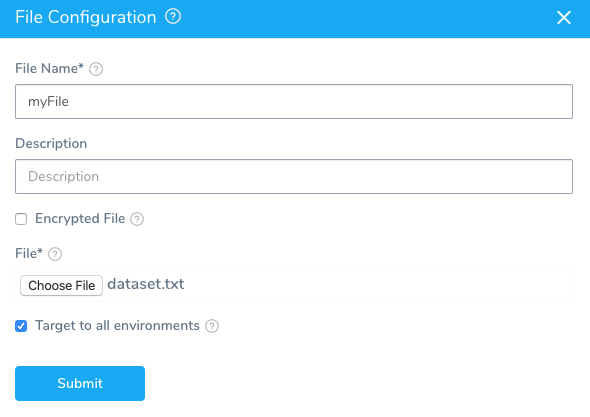Use Harness Config Files in Manifests
This content is for Harness FirstGen. Switch to NextGen.
You can use files added to the Config Files section in your Kubernetes Service in your manifests, such as in a ConfigMap. You can reference unencrypted and encrypted files, and they can be single or multiline.
Before You Begin
Review: Config File Reference Scope
You cannot reference a Service's Config File in the Pre-Deployment Phase of a Workflow. Canary and Multi-Service Workflows are the only Workflow types with the Pre-Deployment Phase.
The Pre-Deployment Phase does not use a Service and so it has no access to Service Config Files (or Config variables).
You can reference a Service's Config File in the Deployment Phase of the Workflow.
Review: Config Files Encoding and References
Files added in the Config Files section are referenced using the configFile.getAsString("fileName") Harness expression:
configFile.getAsString("fileName")- Plain text file contents.configFile.getAsBase64("fileName")- Base64-encoded file contents.
Review: Use Base64 to Avoid New Lines
If you are going to use a Config File in a manifest, be aware that ${configFile.getAsString()} can cause problems by adding new lines to your manifest (unless you have formatted the file very carefully).
Instead, use ${configFile.getAsBase64()}. This will ensure that the contents of the file are rendered as a single line.
Step 1: Add the File to Config Files
In this example, we will use a file in a ConfigMap object.
Add the unencrypted file to Config Files. In this example, the file is a base64 encoded file named
myFile.Make sure you have the update permission on the Service or the Environment before you try to add the Service Config File. See Managing Users and Groups (RBAC) for more information about assigning permissions.

The base64 encoded file will be decoded when added to the manifest, as shown below.
Step 2: Reference Config File
In the values.yaml in the Harness Service Manifests section, reference the Config File using
my_file: ${configFile.getAsBase64("myFile")}.
Step 3: Decode the File
In the manifest (in our example, a ConfigMap), decode the base64 Config File and indent it for the YAML syntax:
data:
keyname: |
{{.Values.my_file | b64dec | indent 4}}
At runtime, the Config File is decoded and used as plaintext.
Limitations
- Do not use Harness variables within the file used as a Config File. Harness does not do variable substitution of content within an uploaded Harness Config File.